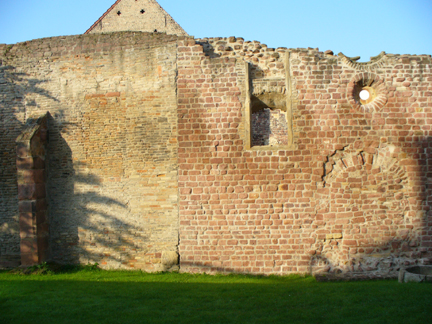
After we docked in Speyer, we went on a walking tour with a local guide. Our first stop was the Juden Bad (Jewish Bath), or Mikwe, established before 1128. This photo shows the remaining walls of the adjacent synagogue.
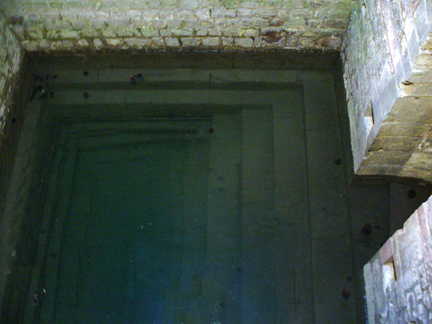
This is the the bath used by the women for ritual cleansing.

The Church of the Holy Trinity, constructed as a Lutheran church from 1701-1717.

The altar.
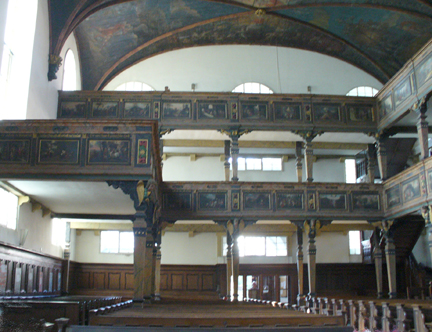
Some of the paintings at the rear and side.
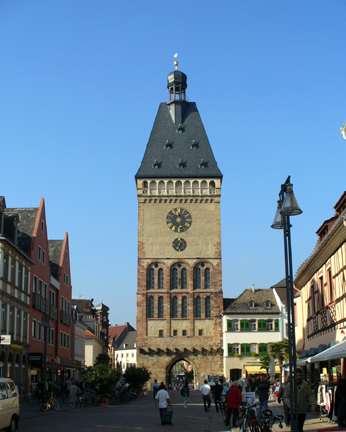
On the main street, Maximillianstrasse, we saw the old city gate...
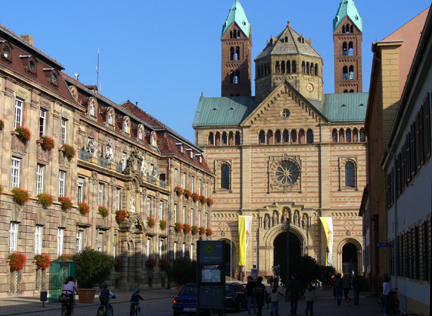
and at the opposite end of the street, the city hall on the left and the Cathedral.
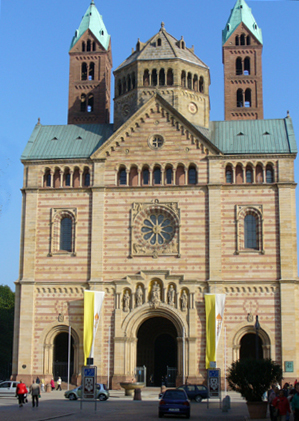
The dominant building in Speyer is the Cathedral of St. Mary and St. Stephen, the largest Romanesque basilica in Germany. It was founded in 1030, consecrated in 1061, partially destroyed in 1689 and by 1778 it had been restored to its original state. It is about 150 yards long, over 40 yards wide and its spires are over 70 yards high. It contains the tombs of 8 German emperors and kings.
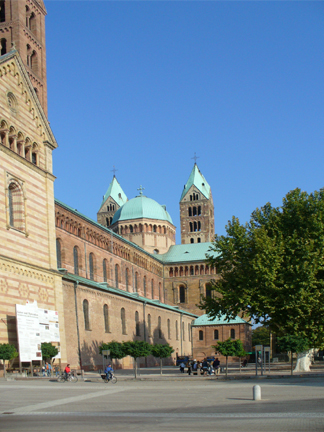
A side view.
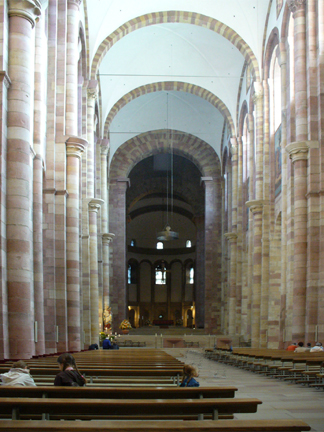
The interior.

A closer look at the altar and the crown which denotes its connection with royalty.

The crypt.
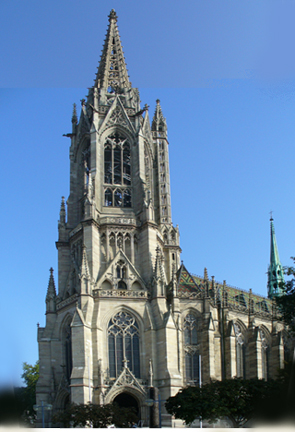
The Memorial Church of the Protestation is a Protestant church in Speyer. Built between 1893 and 1904, the church was constructed in memory of the protest that took place at the Diet of Speyer by the Protestant states of the Holy Roman Empire in 1529.

Just outside the entrance is a statue of the great reformer, Martin Luther, illustrating his stance before the Diet of Worms in 1521.

At his feet are the words to remind us of Luther's appearance at the Diet of Worms ( translated as "Here I stand. I can do nothing else, God help me. Amen.")

The stained glass was especially beautiful and unusual in that it pictured many of the usual Biblical scenes as well as portraits of other reformers, such as Melancthon, Farel, Calvin and Zwingli

While walking back to the ship we spotted the remains of the city wall of Speyer.
Continue on to Baden Baden.
